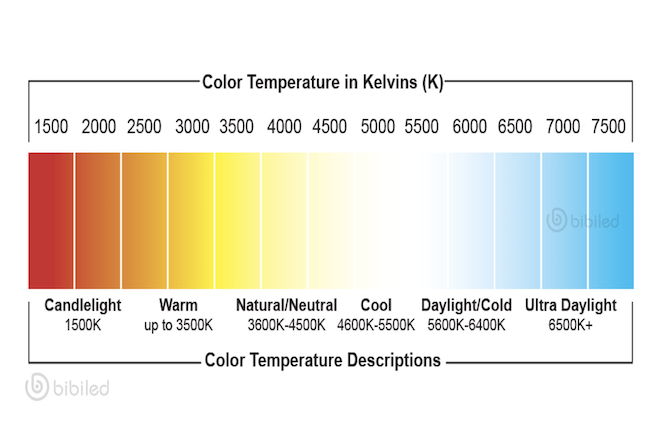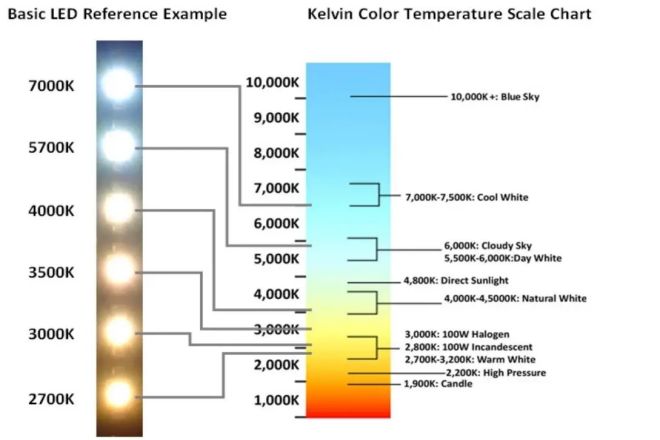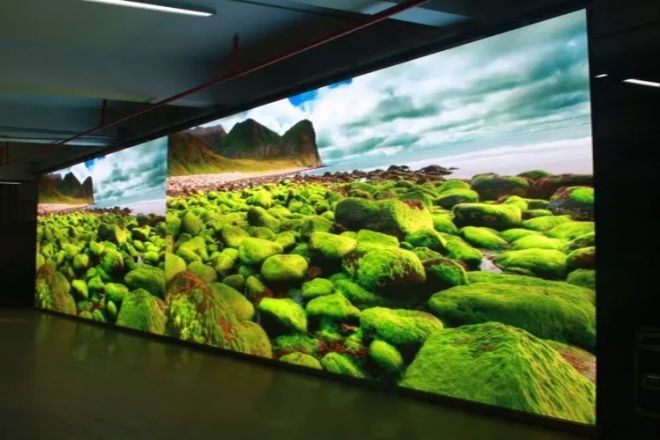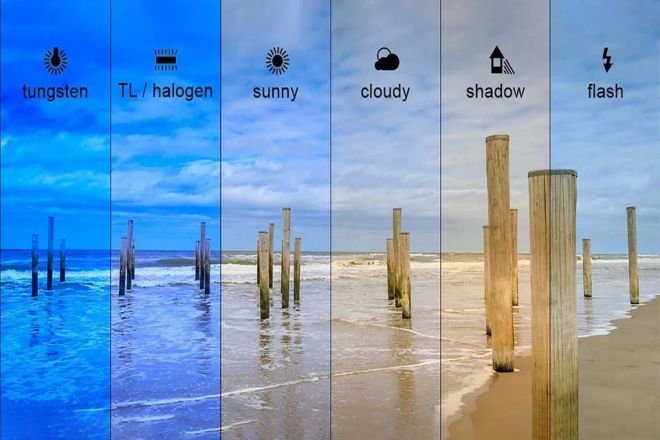Introduction

Entering the colorful world of LED displays, have you ever been deeply attracted by the ever-changing colors? However, behind these brilliant lights, an often overlooked but crucial element-color temperature is quietly affecting your visual feast.
Color temperature is not just a pile of numbers; it is a transmitter of emotions, a creator of the atmosphere, and a weapon for creative expression.
This article will take you to the core of the color temperature of LED display and unlock the secret of this visual magic.
No need for cumbersome theories, just follow our steps, you will easily master the impact of color temperature on the display effect of LED display, and understand how to flexibly adjust the color temperature according to different scene requirements, so that your work stands out and the audience will be bright.
1. Basic concept of the color temperature of LED display

Color temperature is a physical quantity that describes the color of light emitted by a light source and the color of light radiated by a black body at a certain temperature. Its unit is Kelvin (K).
The scientific definition of color temperature comes from the blackbody radiation theory in physics. Specifically, if a standard black body with complete absorption and radiation capabilities is heated, as the temperature gradually rises, the color of the light emitted from the black body surface will change from dark red to light red, then orange-yellow, white, and finally blue.
If the color of the light emitted by a certain light source is the same as the color of the black body radiation at a certain temperature, then the temperature of the black body is called the color temperature of the light source.
1). The relationship between color temperature and color
Color temperature directly affects the color of the light emitted by the light source. Depending on the color temperature, the color of the light source will change significantly:
Low color temperature (below 3300K): The light emitted by the light source is warm yellow, giving people a warm, cozy, and relaxing feeling. This color temperature is usually used on occasions where a comfortable atmosphere needs to be created, such as in homes, restaurants, etc.
Medium color temperature (between 3300K and 5300K): The light emitted by the light source is natural white or neutral white, with soft and comfortable colors, close to the color of daytime sunlight. This color temperature is widely used in offices, commercial spaces, and other places where a sense of natural light needs to be maintained.
High color temperature (above 5300K): The light emitted by the light source is cold blue, close to the color of midday sunlight, giving people a bright and refreshing feeling. High color temperature is often used in places where efficient work or high-definition display is required, such as offices, hospital operating rooms, etc.
2). Characteristics of the color temperature of LED display screens
LED display screens have high flexibility and significant advantages in color temperature adjustment:
- Wide color temperature adjustment range:
The color temperature adjustable range of LED display screens is usually from 3500K to 9000K, covering various light requirements from warm yellow to cold blue. This wide adjustment range enables LED display screens to adapt to a variety of different application scenarios and visual needs.
- Precise color temperature control:
Modern LED display technology continues to advance, making the control accuracy of color temperature higher and higher. Through advanced color temperature adjustment technology, LED display screens can achieve precise control of color temperature to ensure the best picture effect in different environments.
- Enhance viewing experience:
In cinemas, museums, offices, and other places, LED display screens can create an atmosphere and emotion that matches the scene by accurately adjusting the color temperature. This not only improves the viewing experience of the audience but also enhances the effect of information transmission.
- High efficiency and energy saving:
LED display screens can maintain high light efficiency and low energy consumption during color temperature adjustment. This is due to the energy-saving characteristics of the LED light source itself and the advanced heat dissipation technology, which enables the LED display screen to maintain stable performance output during long-term operation.
2. What are the factors that affect the color temperature of LED display screens?
1). Types of LED chips
There are different types of small lamp beads (we call them LED chips) on LED display screens, which can emit light of different colors. For example, some LED chips work with blue light chips plus a substance that can turn light into yellow (called phosphor).
By adjusting the amount of phosphor, the light can be made warmer or colder. Some LED chips are directly red, green, and blue. By controlling the brightness of these three colors, any color we want can be mixed, including white light of different color temperatures.
2). Current and control technology
When the LED chip is powered on, the magnitude of the current will affect the brightness and color of its light. If the current is unstable, the color of the light emitted by the LED will change, and the color temperature will be unstable.
Therefore, we need to use advanced technology to control the current and keep it stable so that the color temperature of the LED display can remain consistent. This is just like when we adjust the water flow of the faucet; we need to adjust it to just the right size so that the water will not splash out.
3). Ambient temperature
The LED display will heat up when it is working, just like we will feel the back of the phone is hot after playing with it for a long time. If the ambient temperature is too high, or the display does not dissipate heat well, the LED chip will not work properly because it is too hot, causing the color of the light emitted to change, and the color temperature will be wrong.
Therefore, we need to install a heat dissipation device on the display, such as a small fan or heat sink, to help it cool down and keep it working normally.
4). Use time and aging
Anything will slowly get old after being used for a long time, and LED displays are no exception. After long-term use, the LED chip and the materials inside will gradually age, just like our shoes will wear out after being worn for a long time. This will cause the light emitted by the LED to dim, and the color will change, including the color temperature.
Although this is unavoidable, we can delay this aging process by choosing good quality LED chips and reasonable use and maintenance so that the display can remain in good condition for a longer time.
3. How to adjust the color temperature of LED display

The adjustment method of the color temperature of the LED display screen can be mainly carried out from three aspects: software control, hardware adjustment, and intelligent linkage:
1). Software control
- Preset color temperature mode:
Most modern LED display screens are equipped with control system software, through which users can directly adjust the color temperature.
The control system software usually provides a variety of preset color temperature modes, such as warm white, natural white, cold white, etc. Users can choose the appropriate color temperature mode according to their needs.
- Custom color temperature setting:
In addition to the preset mode, some advanced control systems also allow users to set custom color temperature.
Users can accurately set the required color temperature value by adjusting the brightness ratio of the three color channels of red, green and blue.
This method requires users to have certain color knowledge and adjustment experience, but it can achieve a more personalized color temperature effect.
2). Hardware adjustment
- Replace or adjust LED lamp beads:
If the color temperature of the LED display screen is greatly different from the demand, and a satisfactory effect cannot be achieved through software control, you can consider replacing or adjusting the LED lamp beads.
By replacing lamp beads with different color temperatures or adjusting the ratio and layout of existing lamp beads, a significant change in color temperature can be achieved. However, this method is relatively complex and costly and is usually suitable for professional applications with strict requirements on color temperature.
- Adjust circuit parameters:
Circuit parameters also have a certain impact on the color temperature of LED displays. By adjusting the current, voltage, and other parameters of the driving circuit, the luminous intensity and spectral distribution of the LED lamp beads can be changed, thereby indirectly affecting the color temperature.
However, this method requires professional circuit knowledge and debugging experience, and improper operation may cause damage to the display or performance degradation.
3). Intelligent linkage
- Intelligent sensing technology combined with color temperature adjustment:
With the continuous development of intelligent technology, more and more LED displays have begun to integrate intelligent sensing functions. These displays can automatically adjust the color temperature according to changes in ambient light to provide a more comfortable and appropriate visual experience.
For example, in a dark environment, the display will automatically adjust to a lower color temperature (warm tone) to reduce visual fatigue; in a bright environment, it will adjust to a higher color temperature (cold tone) to improve the display effect and clarity.
- Application scenarios:
Intelligent linkage technology is widely used on many occasions, such as at home, in the office, and in business. For example, in smart home systems, LED lighting equipment can automatically adjust color temperature according to indoor light and user preferences.
In offices and conference rooms, smart LED displays can automatically adjust color temperature according to meeting needs and environmental changes to create a more professional and comfortable atmosphere.
4. Application of LED display color temperature in different scenarios

The application of LED display color temperature in different scenarios is wide and diverse. The following is a detailed analysis of the application of each scenario:
1). Commercial advertising
In commercial advertising, the choice of color temperature is crucial to convey specific emotions and atmosphere.
- Warm home advertising:
In order to create the warmth and comfort of home, such advertisements often use LED displays with low color temperature (such as around 3000K).
The warm yellow tones emitted by low color temperature can inspire the audience’s yearning for home and warm feelings, and enhance the attractiveness of the advertisement.
- Technology product advertising:
In contrast, technology product advertising prefers to use LED displays with high color temperatures (such as above 6000K). The cool white tones brought by high color temperature can convey the modernity, professionalism, and efficiency of technology products, which is consistent with the technological attributes of the products.
2). Stage performances
In stage lighting design, the flexible application of LED display color temperature is essential for creating visual impact.
- Scene change coordination:
As the stage plot develops, the color temperature of the LED display can be adjusted in real-time to match the scene changes. For example, when performing romantic scenes, the color temperature can be lowered to create a warm and romantic atmosphere, while in exciting plots, the color temperature can be increased to enhance the audience’s tension.
- Visual effects:
By quickly switching color temperature, LED displays can also create unique visual effects, such as color gradients, flashing, etc., to bring a more shocking visual experience to the audience.
3). Stadiums
In large-scale sports events, the choice of LED display color temperature has an important impact on the audience’s viewing experience.
- Enhance the viewing atmosphere:
Depending on the nature of the event, the LED display can adjust the color temperature to create a different viewing atmosphere.
For example, in basketball games, higher color temperatures can create a bright and clear game environment, making it easier for the audience to see the players’ movements and the details of the game; while in football games, lower color temperatures can create a more warm and passionate viewing atmosphere.
- Enhance audience emotions:
By adjusting the color temperature, LED display screens can also enhance the audience’s emotional experience to a certain extent.
For example, at critical moments or exciting moments, by increasing the color temperature to enhance the brightness and contrast of the picture, the audience’s excitement and sense of participation can be stimulated.
4). Public space and night scene lighting
As one of the elements of urban night scene lighting, the selection of LED display screen color temperature is also crucial to the integration of urban style and cultural atmosphere.
- Urban style integration:
Different cities have unique urban styles and cultural atmospheres. The color temperature selection of LED display screens should be coordinated with the urban style to show the unique charm of the city.
For example, in historical and cultural cities, LED display screens with lower color temperatures can be used to create a simple and elegant atmosphere, while in modern metropolises, LED display screens with higher color temperatures can be used to show the city’s modernity and vitality.
- Cultural atmosphere creation:
In public spaces, the color temperature selection of LED display screens can also be adjusted according to specific occasions and cultural atmosphere.
For example, in festivals and other activities, the color temperature can be adjusted to create a cheerful and warm atmosphere, while in commemorative events and other occasions, a lower color temperature can be used to create a solemn and solemn atmosphere.
Conclusion
In summary, the color temperature of LED display screens is an important part of visual presentation, and its importance is self-evident. By accurately controlling the color temperature, we can not only create more vivid and realistic visual effects but also create unique atmospheres and emotional expressions according to the needs of different scenes.
With the continuous advancement of technology and the continuous expansion of the market, the adjustment and application of the color temperature of LED display screens will become more intelligent and humanized, bringing us a more colorful visual feast.
Finally, if you want to know more about LED display screens, please get in touch with us.
